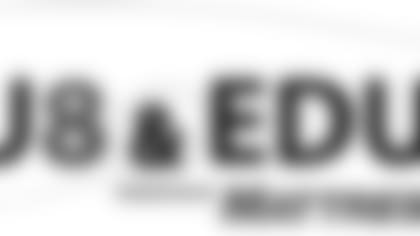
After the Texans had won four straight earlier this season and prepped for the Buffalo Bills, I did an interview with a radio station outside of Houston. They, of course, asked me how dominant the Texans defense had been over that run so I spent a good amount of time paying homage to Romeo Crennel, defensive staff and players. Near the end of the interview, they asked me if there was any real concern facing Tyrod Taylor, Shady McCoy and the Bills offense.
Thinking on my feet and remembering some difficult moments earlier in the season, I said...
"Taylor's ability to run, especially on the zone read is a concern. Hopefully, he doesn't get loose to the perimeter on those type of runs."
He did. Ugh.
Now, fast forward to this weekend and ask me the same question. What's my concern about facing the Chiefs? Stopping Alex Smith from picking up "cheap and easy" yards on the zone read. Look, the zone read isn't something the Chiefs live off of, but Kansas City, Carolina and Buffalo all hurt the Texans with their version of zone read earlier this season. So, the worrywort, coach traits in me got me thinking about how the Texans can stop something this weekend that they truly haven't seen all that often this year.
The zone read is a concept that grew legs in college football in the late 1990s and made its way to the NFL a decade or so later. At the college level, it's more like a zone read PhD. clinic with all the different wrinkles and complex reads. NFL teams, however, run a truly basic version of it but that's all it takes to be effective in most cases. What makes it an effective play at any level is how easy the read is for the quarterback.
Take a look at how the Chiefs ran zone read at the Texans earlier this year.
The Chiefs had just gotten a first down and put 11 personnel on the field but aligned Travis Kelce as a wide receiver to the top of the formation. So, it was more like 10 personnel (one RB and no TE). The Chiefs had a trips, wide bunch set to the bottom of the formation with Knile Davis next to Smith in the shotgun.
Here's the end zone shot to see how the fronts were aligned.
On the snap, Davis took an inside zone path to the right, while Smith's eyes went immediately to Jadeveon Clowney.
Smith knew immediately, based on Clowney's aggressive pursuit, that he'd pull the rock and run, but he wanted to get as clean to the perimeter as he could. So, he rode the fake as long as possible before pulling the ball out of Davis' belly.
Smith was off into wide open space for a strong pickup on first down.
Easy pickings, right?
Unfortunately.
But, for as easy as it was there are a couple of ways to stop the zone read, but the NFL isn't the place to look for how to slow or stop the zone read.
Option 1 - DE/OLB "stop, squat and slow play"
For lack of a better term, college defensive ends are taught when facing teams that run zone read, or versions of zone read, to not be as aggressive upfield immediately at the snap. Here's an example from the 2016 Alamo Bowl when TCU took on Oregon and mobile QB Vernon Adams Jr.
Oregon (in the white jerseys on offense) are in a similar backfield set as Kansas City was vs. the Texans in the first matchup. As soon as the Ducks aligned as such, alarms went off for TCU's DE to the top of the screen.
On the snap, you'll see that the TCU DE doesn't go anywhere. He planned to "stop, squat and slow play". Oregon QB Adams' eyes go straight to the DE to decide if he was going to pull and run based on that DE's actions.
Even with the ball in the belly of the Oregon RB, the TCU DE doesn't move. He continues to squat and read, to make Adams' decision as difficult as possible.
The Ducks RB now has the ball and started on his running path and the TCU DE STILL hadn't truly closed on the ball. He knew that he had PLENTY of help from his interior and he trusted it. Where that DE didn't have any help was to the outside on the QB. So, by squatting and slow playing the QB, he forced the give to the RB, back to his teammates inside. Only then...
...did he close on the RB. And, what happened? The RB was bottled up with nowhere to run, as Chiefs RB Davis would've been had the Texans forced Smith to hand off the same way. TCU's DE from the other side teamed with the TCU interior to make the tackle for a loss.
That's one way to play it. Here's another and a warning...I went in the way-back machine for this one.
Option #2 - Gap/Scrape exchange
At first read, you'd think I blamed Clowney for being too aggressive going after Smith and that's not totally accurate. I have no problem with him being aggressive sprinting from the backside, but if he does that, someone's got to account for the quarterback on the pull.
I went in the way-back machine for this one, but Bob Stoops' 2003 Oklahoma defense showed how to play that same situation with what many call scrape exchange or gap exchange. In essence, by design, the defense will send the DE on a bat-out-of-hades chase after the running back BUT the backside linebacker will "exchange" his responsibilities with the DE and play the quarterback on the zone read pull.
This was from OU's 2003 game against Texas and the Godfather of the Zone Read Vince Young. Again, similar backfield look from Texas as the Chiefs threw at the Texans.
OU LB Teddy Lehman was the linebacker charged with exchanging his gap responsibilities with OU DE Jonathan Jackson.
As Young put the ball in the stomach of Cedric Benson, Jackson took off down the line of scrimmage. That immediately gave Young his read. He ran zone read for a long gain earlier in the game and he was about to do it again. Or so he thought.
He pulled the ball from Benson and...
...he had nowhere to run.
Why?
Little did he realize that Lehman "exchanged" to the perimeter and didn't track Benson, but read Young the entire way.
As Young ran to the outside, Lehman was waiting for him and made the tackle for no gain. Later in the game, Lehman made a similar tackle on Young on a similar tactic.
It took a ton of discipline for Lehman to not chase the running back from the backside, but it paid off. With the DE crashing hard and no one blocking him, the RB really has nowhere to go upfield.
But, the QB does if not accounted for on the perimeter. Smith found wide open space. So did Cam. Tyrod too.
Scrap exchange/gap exchange is a version of cross keying running backs as we utilized decades ago facing wing-T offenses. The wing-T won with deception and crossing backs and the sort, so we would key the back opposite us because the back was coming our way, based on wing-T principles. Zone read principles are similar. So, scrape/gap exchange is a glorified version of crossing key backs.
Regardless, the zone read can be stopped. Now, the Chiefs won't run it a ton but they're effective when they run it because NFL defenses don't typically have a clue how to stop it. Well, the Texans have two different ways to stop it and eliminate that wrinkle from Smith and the Chiefs on Saturday. All they have to do is stop it once and the Chiefs will stay away from it. But, as soon as a Chiefs RB aligns next to Smith in the shotgun, the "zone read alarm" should go off in Texans' defenders head.
Squat and slow play or scrape exchange. Like using variations in coverage, mix it up. Play it one way on one play, the other way the next. Just get it stopped.













